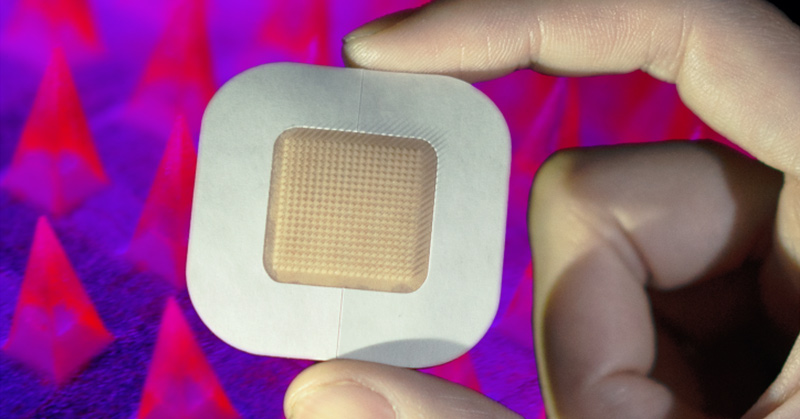If you have type 1 or type 2 diabetes, monitoring your blood sugar levels regularly is the most important step you can take in managing your condition. Having information that tells you what causes changes in your blood glucose levels, like eating particular foods, taking your medication, or exercising, can help you work with your doctors to create a diabetes management plan that works for you [1].
Most doctors recommend patients check their blood glucose levels four to ten times every day, which can be a very demanding schedule for patients to stick to [2]. For this reason, many people with Diabetes do not check their glucose levels as often as they should. According to the American Diabetes Association, 67 percent of patients fail to routinely monitor their blood glucose levels [3].
Reasons for why a patient may not comply with their prescribed testing frequency vary, but pain or perceived pain associated with the procedure appears to be the primary cause. Other barriers, such as feelings of low self-efficacy and low self-confidence, as well as lifestyle interference and inconvenience associated with frequent testing, also affect patient compliance [3,4].
For these reasons, researchers have been looking for ways to improve the at-home blood glucose monitoring procedure to increase compliance, therefore improving the quality of life for people with Diabetes.
Read: Okra Controls Hunger and Diabetes, Lowers Cholesterol, and Fights Fatigue
Insulin Patch
Researchers at the University of California Los Angeles, University of North Carolina, and MIT, have created a wearable patch that automatically releases insulin based on the wearer’s blood glucose levels [5].
The device is small- about the size of a quarter- and sticks to the skin. It contains dozens of needles that are less than one millimeter in length, and are made of a polymer that is sensitive to glucose. As glucose levels begin to rise, the tiny needles release the insulin that is stored within them. Once glucose levels return to healthy levels, the patch slows down the rate of insulin release [5].
How is Blood Glucose Usually Monitored?
In order to test your blood glucose levels, you need a blood sugar meter, which measures the amount of sugar in a small sample of your blood. This blood sample is taken by the individual, usually through a small incision in the finger. These are the steps to checking your levels:
- Wash and dry your hands well. (Food and other substances can give you an inaccurate reading.)
- Insert a test strip into your meter.
- Prick the side of your fingertip with the needle (lancet) provided with your test kit.
- Touch and hold the edge of the test strip to the drop of blood.
- The meter will display your blood sugar level on a screen after a few seconds.
Some people, particularly those with type 1 diabetes, may use a continuous glucose monitor (CGM) that measures your blood glucose levels via a sensor that is inserted under the skin. These sensors typically need to be changed every one to two weeks, although some newer versions can last up to three months. Most of these devices, however, still require a finger-stick check in order to calibrate the machine [2].
Benefits of the Patch
The main goal of the device, according to Zhen Gu, PhD, professor of bioengineering at the UCLA Samueli School of Engineering and a former professor in the UNC/NCSU Joint Department of Biomedical Engineering, is to improve the quality of life for people who have diabetes.
“This smart patch takes away the need to constantly check one’s blood sugar and then inject insulin if and when it’s needed,” explained Gu. “It mimics the regulatory function of the pancreas but in a way that’s easy to use.” [5]
The patch eliminates the main barrier of self-testing: the fear of needles. It also makes regular testing much less inconvenient and disruptive to daily activities and puts less pressure on the patient to know exactly how much insulin they need to use at any given moment. All of these benefits of the device will increase compliance among patients.
The Future of Diabetes Treatment
The patch has already been tested on mice and pigs and was able to keep blood glucose levels stable for twenty hours. The technology is cheap to manufacture, and researchers hope that someday soon that Diabetes patients will be able to put a patch on in the morning and not have to worry about checking their blood glucose levels throughout the entire day [5].
Keep Reading: Help Prevent Type 2 Diabetes and Balance Blood Sugar with These 10 Foods
Sources
- https://www.cdc.gov/diabetes/managing/managing-blood-sugar/bloodglucosemonitoring.html
- https://www.mayoclinic.org/diseases-conditions/diabetes/in-depth/blood-sugar/art-20046628
- https://care.diabetesjournals.org/content/24/8/1502
- https://www.touchendocrinology.com/barriers-and-behaviors-in-blood-glucose-monitoring/
- https://www.medgadget.com/2020/02/patch-automatically-delivers-insulin-as-blood-glucose-rises.html

